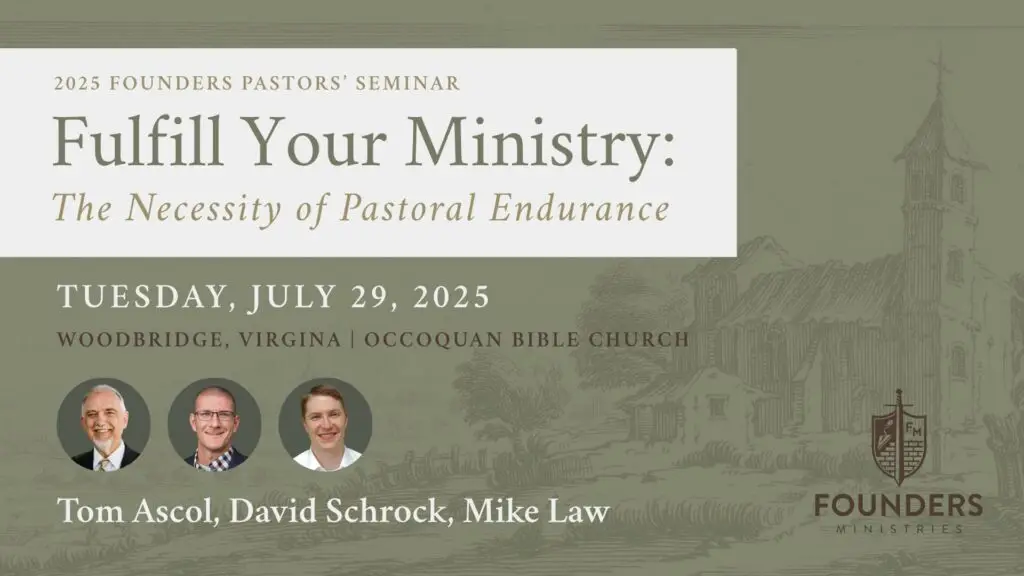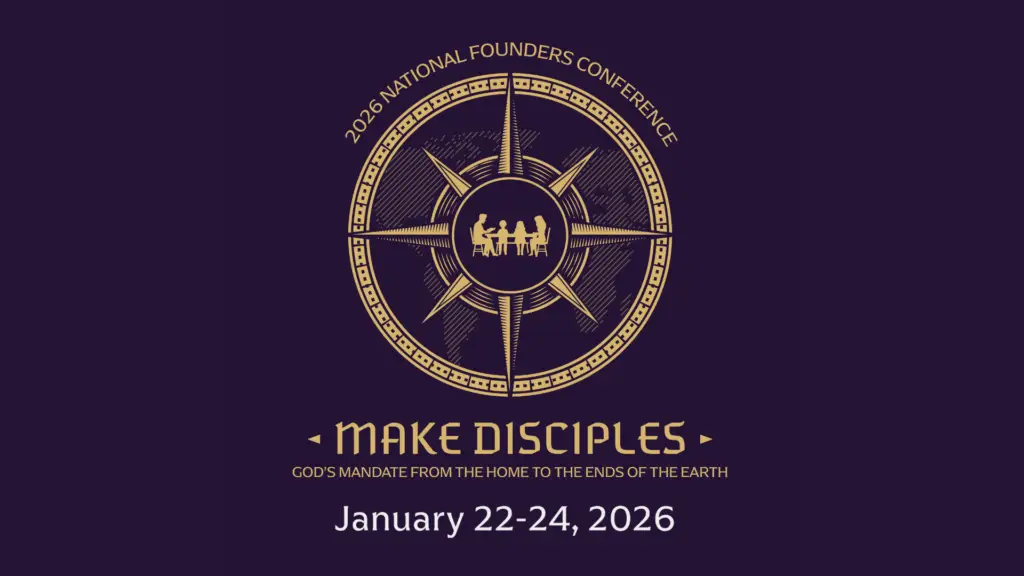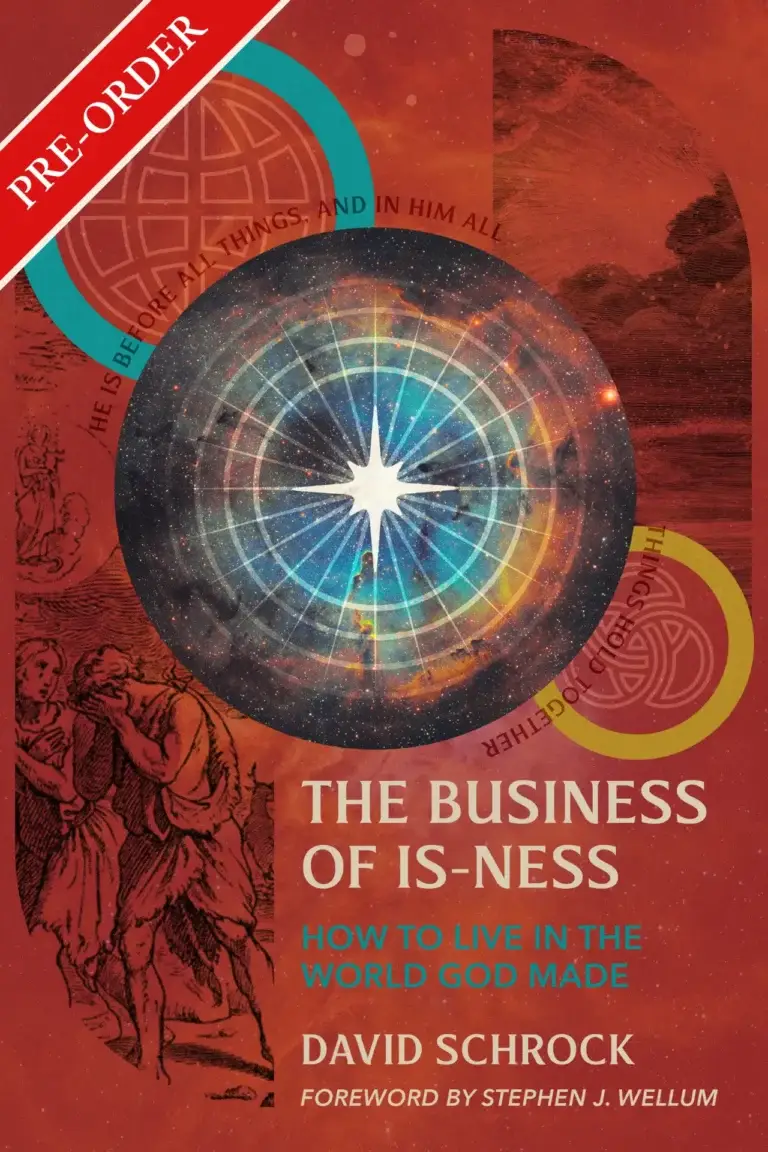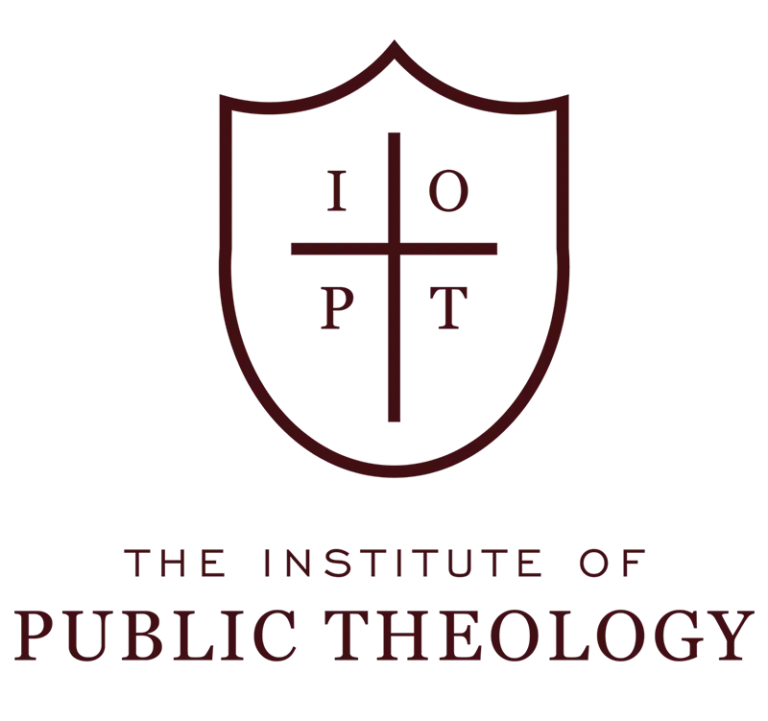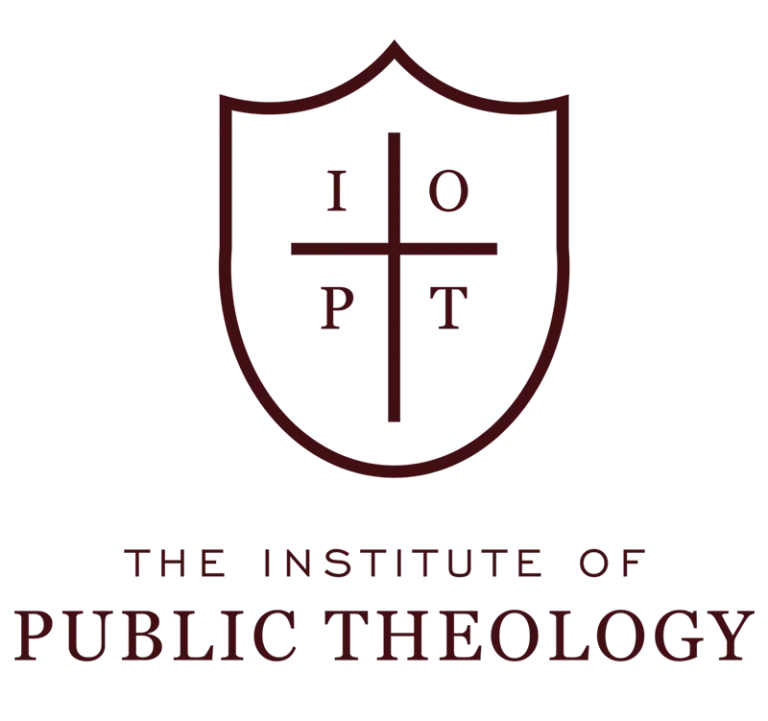Chapter 25: Second London Confession
To say there’s confusion today regarding marriage might be the understatement of the century. In the name of diversity, reports parade people who married the Eiffel Tower, the Berlin Wall, a videogame character, themselves, and more: a duvet, Tetris, a ghost, a fairground ride, Jesus… Multiple-adjective marriage is the new social norm, applying a growing number of descriptors like gay, straight, open, traditional, egalitarian, civil, shotgun, commonlaw, or solygamous to the institution. The list promises expansion as those agitating to wed siblings, children, or pets progress in their quest.
The church is not exempt from this confusion. Pastors scratch their heads quizzically at odd new verbiage people adopt, trying to grasp the implications in light of Scripture. When they finally top the peak of last month’s jargon and nuance, the vista reveals vastly more ground to be traversed. Small wonder, then, if preaching and counsel on marriage often reflects more exasperation than exposition.
A greater cost than intellectual legwork looms, however. From redefinition to outright rejection, little draws heavier fire than affirming the biblical and confessional view of marriage. Faithful Christians must prepare to pay the price exacted by a politically correct, inclusivity-crazed culture. The 1689 Second London Baptist Confession of Faith (2LC or 1689 hereafter) offers much help here in both grasping and giving the eternal nature of Christian truth. This exposition intends no defense of bare traditionalism, but to explain Scripture’s position as summarized by the 2LC framers. They crafted a timely, textual statement, and following our forefathers, “it is Verity, not Victory, that is here contended for.”[1] We must constantly bear in mind that marriage ultimately suffers distortion, dismissal, and assault because it says something about the person and work of Jesus.
Introductory considerations[2]
Approaching 2LC’s structure, a chapter’s first paragraph typically presents its thesis, while subsequent paragraphs provide exposition and expansion of the concept.[3] 1689 language, standing in doctrinal alignment with broader Reformed and Puritan convictions,[4] principally follows the Savoy Declaration (1658) in omitting WCF (1646) 24.5-6.[5] While no explicit statement of 2LC’s reasoning for the deletion occurs, Savoy’s preface specifically cites WCF 24’s extended treatment of marriage and divorce, arguing on this head that “nothing tends more to heighten Dissensions among Brethren, than to determine and adopt the matter of their difference, under so high a Title, as to be an Article of our Faith.”[6] Renihan helpfully reminds us that “deletion of terms or phrases does not necessarily imply the rejection of a concept.”[7] But brotherly love and firm unity in the leading principles of truth presented sufficient reason to permit differences of conscience on the debatable point of divorce,[8] while standing lockstep regarding the sanctity of marriage.
We shall reason from Scripture in explaining the Confession, referencing relevant primary sources where helpful. Pride of place goes to the “Three Forms of Unity, Baptist edition” – Hercules Collins’(1646/7-1702) An Orthodox Catechism (1680), the Second London Baptist Confession (1689), and the Baptist Catechism (1693).[9] In 1697, Particular Baptist pastor Benjamin Keach (1640-1704) – probably one of the framers or editors of 2LC – released a small work entitled The articles of the faith of the Church of Christ, or, Congregation meeting at Horsley-down[10] “because the [1689] General and more Large Confession of Faith of our Churches, is now out of Print; but that is not all, that being 12 d. price, some cannot well purchase it.”[11] Its language on marriage depends heavily on 2LC, abstracting chapter 25 nearly verbatim, though the Articles of Faith do not appear to have achieved widespread usage outside Keach’s congregation.[12] It offers, nevertheless, a tantalizing glimpse into how the Confession’s doctrines were propagated just a few years after the Act of Toleration (1689) and only 10 years before the Philadelphia Baptist Association formed (1707). Interestingly, the First London Baptist Confession (1644/46), New Hampshire Confession (1833), and Abstract of Principles (1857) do not contain any chapters on marriage.
The Members of Marriage (2LC 25.1)
Marriage is to be between one man and one woman; neither is it lawful for any man to have more than one wife, nor for any woman to have more than one husband at the same time. (Gen 2:24; Mal 2:15; Mt 19:5-6)[13]
2LC affirms marriage as an estate wherein a husband and wife are specifically joined together by God[14] (Gen 2:24; Pro 19:14); it is no mere civil contract, social construct, or consequence of the Fall, but God’s ordained pattern, given before sin, from the beginning (Mt 19:8). Given as a prelapsarian creation ordinance, God intends it as a continuing pattern for all people (2LC 25.3; 1 Cor 7:2), framing reality (Eph 5:22ff), bringing forth posterity (Mal 2:15), and pointing to eternity (Rev 19:6-9). Scripture defines marriage as one man and one woman, for life.[15] Just as the atonement joined a definite bride to her Husband (Isa 53:10f; Jn 10:11; Eph 5:25), so too in marriage “each man should have his own wife and each woman her own husband” (1 Cor 7:2).
Scripture names God’s binding man and wife together a “covenant” (Mal 2:14f; Hos 6:7), wherein they prefer one another above any earthly relation, hold fast to one another in self-giving intimate love, and blend their lives together in all things. Failing to honor Gen 2:24’s pattern of leaving all others, cleaving to one another, and weaving two lives into one is where most marital strife occurs, but the Bible offers no remedies of consensual manipulation popularly accepted as godly counsel. Instead, Scripture’s wisdom calls spouses to give mutual attention to one another in order to care for the other’s soul and be pleasing to God (2 Cor 5:9), expressed by the “one-anothers” of the NT. For example, spouses should aim to outdo one other in showing honor (Rom 12:10[16]), serve one another in love (Gal 5:13), die to self (Lk 9:23; Gal 5:24) and lay down their lives and rights for the other, just like Jesus did for us (Eph 5:25f).
Polygamy, polyamory, polyfidelity, and the like are therefore forbidden; such unions, ultimately rooted in selfish desire, constitute an assault on God’s design of mutual service and self-denial for the glory of Jesus. Scripture recognizes no more than two biologically-opposite-gender spouses as constituting a marriage (Dt 17:17). The bigamy recorded in the OT (Lamech, Gen 4:19; Abraham, Gen 16,21; Esau, Gen 28:6-9; Jacob, Gen 29, etc.) alongside Solomon’s polygamy (1 Kgs 11:1-8) constitutes no normalization, celebration of diversity, or exemplum ut simulantior for biblical marriage, but bears witness to how rapidly sinful men assaulted God’s ordained design.[17] Though the “one flesh” marital union is a key biblical-theological concept (Gen 2:24f; Mt 19:5f), Jesus validates parking for nothing but two real people.
Along the same lines, unions with virtual characters or inanimate objects are forbidden; the Greek word for that relationship status is “single.” God giving man dominion over all things (Gen 1:28f) does not extend to making substitutions – nothing incapable of consent[18] can fill the role he designed for his image-bearers. His desire is union “so long as you both shall live,”[19] not until the next power surge, app update, or DIY renovation weekend, in order that the exclusive covenant of marriage point beyond itself to the excellence of the covenant of grace (Eph 5:32).[20] The sanctity and specifics of Christian marriage are reflected in the redeemed heart’s cry: “O magnify the Lord with me, and let us exalt his name together” (Psa 34:3).
The Motivations of Marriage (2LC 25.2)[21]
Marriage was ordained[22] for the mutual help of husband and wife, for the increase of mankind with a legitimate issue, and the preventing of uncleanness. (Gen 2:18; Gen 1:28; 1Co 7:2,9)
Men dead in their sins act in self-interest by nature. The reality that they cannot and will not do otherwise (Rom 8:5-8) frequently appears in their reasoning for pursuing marriage. In the classic film “White Christmas,” Phil Davis tells Bob Wallace, “My dear partner, when what’s left of you gets around to what’s left to be gotten, what’s left to be gotten won’t be worth getting, whatever it is you’ve got left.” Wallace humorously retorts, “When I figure out what that means, I’ll come up with a crushing reply” – but almost immediately concedes his friend’s point. While an unregenerate man’s motivations are frequently varied and difficult to untangle (Pro 20:5), it is painfully obvious that he cannot ultimately seek the glory of God in his intended union (Rom 14:23b). In other words, though marriage is a common grace blessing, it has a special grace intent – godly offspring (Mal 2:15). God’s glory in redeeming sinners is the final aim of marriage, and indeed, all of life (Isa 43:7); Scripture proclaims a God who aims at far more than “what we can get” out of marriage.
Manton notes that “God was the first Author of it; his act hath the force of an institution.”[23] 2LC records 3 significant reasons why God instituted or ordained marriage. First, Gen 2:18-23 teaches that he intends service – “mutual help”[24] for both husband and wife. That is, God desires our unions to be marked by assistance (“a helper,” vv 18,20,23), fellowship (“this at last,” v 23a), and companionship (“fit for him,” vv 18,20). Gen 2 focuses on Eve’s role as a helpmeet for Adam, and this is where, combatting egalitarian and feminist wickedness of our day, many modern treatments of marriage rightfully focus. But the NT also calls husbands[25] to a fitting, holy response of help and costly, tender service in imitation of Jesus (Eph 5:25f). Christ served his people at the Cross by his death, and continues in his session by his Spirit and providential rule. So too Christians are to be a people who serve freely, humbly, personally, and lovingly (Lk 22:27); as Flavel urged, spouses should “study to be mutual blessings to each other.”[26] This is no mere meeting in the middle or striking an acceptable compromise, but self-giving, sacrificial, self-forgetful, other-minded, Christ-centered love “in deed and in truth” (1 Jn 3:18). Such “mutual help” will serve the other in both practical and spiritual matters; it will not content itself that the house is clean, while the heart is not.
Second, 2LC asserts, God ordains the establishing of a family: “the increase of mankind with a legitimate issue.” That is, the Lord desires that godly children be reared within the covenanted context. In this process, our homes increasingly come to reflect how Jesus rules over us. In Gen 1:28f, God commands Adam and Eve to “be fruitful and multiply, fill the earth and subdue it.” Man’s rule over earth is not fundamentally ecological or environmental, but matrimonial and familial. Families are to fill, care for, and rule over the earth in a way that brings him honor, and that starts with the imagebearers living under my roof. Here the covenanted context comes into clearer focus. 3 covenants are introduced in Gen 2-3 (works, grace, and marriage). God’s goodness in joining sinners to one another for life points to his grace in uniting them to himself for eternity. The earthly family points to the eternal family; our earthly dominion points to his eternal dominion. Note here that God’s primary church-growth plan is the family: it glorifies God to marry, have as many babies as he’ll give, and live a life showing and telling them of Jesus’ kingly grace at the Cross. God’s goal is his glory, comprehended and cherished in godly homes, and the union of man and wife is a parable of his promises in Christ.
2LC’s final reason is for “preventing uncleanness”[27] – that is, to safeguard mutual purity, and provide marital pleasure (the Puritans often termed it “rendering due benevolence” or “safeguarding marital chastity”). 1 Cor 7 is of great help in considering how Jesus sanctifies his people within marriage. Corinth was well-known in the first century A.D. as the city of one thousand prostitutes, most of whom worked for the Aerocorinth temple to Aphrodite. As many of Paul’s young Christians there had been converted out of that immorality, 1 Cor 7:2 recognizes “the temptation to sexual immorality” as a significant matter because most didn’t have the gift of singleness (vv 5,9).
God intends marital intimacy as protection against the threats of fornication, adultery, and general immorality; his interest is in both husband’s and wife’s mutual conformity to Christ. Marriage is a means of sanctification for Christians in how they consummate their God-given love (“do not deprive one another,” v 5), communicate about exceptions (“except perhaps by agreement for a limited time”), use it as a springboard to commune with God (“that you may devote yourselves to prayer”), and control themselves in love to God and one another (“then come together again, so Satan may not tempt you because of your lack of self-control”).
The framers referencing 1 Cor 7 raises two points worth mentioning: sexual self-control (v 5) and the question of divorce (vv 10-17). While marriage is given as a means of “a legitimate issue,” it is possible to abuse the blessing of marital sex. The NT plainly forbids weaponizing or incentivizing it (vv 2-5,9), but Christians must also take care that their enjoying liberty does not occasion indulging lust or strengthening idolatry. God created sex, commands it in marriage, and devoted an entire book of Scripture to its joys, but he requires us to regard and approach the marriage bed as holy (Heb 13:4).[28] He gives us marital love not merely as a means of sexual satisfaction, but sexual sanctification.
It’s in that light that 1 Cor 7:10-17 speaks so powerfully regarding divorce: God saves whom and when he wills (Rom 9:16,18), directs the circumstances surrounding each life (Ps 57:2; Ps 139:16; Heb 12:1b), and governs the response for each person who hears the message and witnesses the effects of his gospel (Ac 11:18; Ac 16:14; 2 Cor 7:10; Heb 12:17). Thus a Christian, so long as their unbelieving spouse will stay (v 15), should remain married.[29] Duties to the unbeliever now proceed with redemptive interest from a heart of love to God and spouse, whereas before they’d issued from self-love and self-interest. The unbeliever comes, as it were, face-to-face with the gospel, and so must deal with Jesus through the spouse’s life and direct influence (cf. 1 Pet 3:1-6). Some the Spirit will bring to faith; others will flee. Divorce is never the aim (Mal 2:16; Mk 10:9), but under God’s providence, sinful people commit sin, and the Lord deals with his redeemed ones in mercy (v 16). The often-uncertain path navigated within the marriage covenant points to Christ’s constancy by uniting with his people in the covenant of grace.[30]
The Manner of Marriage (2LC 25.3)
It is lawful for all sorts of people to marry, who are able with judgment to give their consent; yet it is the duty of Christians to marry in the Lord; and therefore such as profess the true religion, should not marry with infidels, or idolaters; neither should such as are godly, be unequally yoked, by marrying with such as are wicked in their life, or maintain damnable heresy. (Heb 13:4; 1 Tim 4:3; 1 Cor 7:39; Neh 13:25-27)
2LC next addresses God’s demands and denials for marriage. It is a creation ordinance, given to all classes and races of men (Gen 1:28f). Lost people marry constantly, for it is “not a holy estate,”[31] and no restrictions or reluctance may impede any union Scripture permits: it is “lawful for all sorts of people to marry.” Proper consent[32] is the controlling principle here (Gen 24:58,67; Gen 29:23), for “without it, there will be no [true] marriage.”[33] Prospective partners must consider that “what is not sinful may yet be unadvisable” (1 Cor 7:25-40),[34] and that believers may not marry non-Christians (1 Cor 7:39; 2 Cor 6:14), lest “a help…soon become a snare.”[35] As our catechism reminds us, “The duty which God requireth of man is obedience to his revealed will.”[36]
It is both unwise and unlawful for Christians to pursue romantic relationships of any sort with those who are outside of Christ. Saints bought by his blood should find a particular heinousness in unions with those who deny our Lord with their lives or lips. 2LC uses language of “infidels, idolaters, those wicked in life, or [who] maintain damnable heresy.” In view are those who hate Jesus – they redefine who he is, recast what he’s done, revise what he promises, require more than he demands, or reject him outright. From its day to ours, the 1689 envisions a broad spectrum of lost people: heretics of all stripes, Muslims (infidels), Catholics (idolaters), sectarians, schismatics, cultists (there were ever-growing numbers in the seventeenth century), and others ungodly like them. Such may never be considered as potential subjects of a Christian’s relational or marital affections. “What fellowship has light with darkness?” (2 Cor 6:14)
How critical, then, that Christians give meticulous care to approaching God’s gift on God’s terms. Since Heb 13:4 calls marriage honorable and holy, how we handle it must be honorable before men and unto Christ, ultimately reflecting his holiness. Any dishonor here – verbal, virtual, or otherwise – fails to point to the holiness God wrought for us and works in us. Dishonoring your spouse dishonors your Lord in an act of functional atheism. Dishonoring marriage itself matters, too: 1 Tim 4:1-5 warns against forbidding what God approves, while 1 Cor 7:39 cautions against approving what God forbids. “Departing from the faith” and being “devoted to deceitful spirits and teachings of demons” (1 Tim 4:1) proves one a liar “having a seared conscience” (v 2), manifested in either outright “forbidding” (v 3) or adding requirements to what God promises to bless.
In the same way, 1 Cor 7:39 points to the mercy of God in marriage. While permanence is the basic principle, and God’s design is union for the duration of life (vv 12f,27), a spouse’s death (v 39), or the unbeliever’s departure (vv 13,15) results in full freedom to remarry a believer.[37] Calvin writes helpfully that “if an unbeliever put away his wife, a brother or a sister [the Christian] is, by such rejection, freed from the bond of marriage. …. as the obligation and sanctity of the marriage engagement depend upon God, what connection can a pious woman any longer maintain with an unbelieving husband, after she has been driven away through hatred of God?”[38]
2LC references Neh 10 as an anchor for its prohibition of exogamy by defending the exclusivity and sanctity of covenanted Christian marriage. The essential principle is that the professing believer’s union must reflect the purity of the gospel, something impossible to sustain if wed to an unbeliever. Ezra required Israel to put away their foreign women some 15 years prior to Nehemiah’s encounter, demonstrating an honorable zeal for purity and reformation according to God’s word, though Scripture never presents his solution as normative. His decision in that unique context is a redemptive-historical act of safeguarding the purity of the line through which Christ would come. Nehemiah’s response, closing out the OT canon, bears no insinuation of putting away an unregenerate spouse after marriage (contra 1 Cor 7:10-13), but rather displays the consistency of the biblical witness that believers must marry “only in the Lord” (1 Cor 7:39).
Let us be settled that Ezra, Nehemiah, and Paul present no contradictions to one another: our Bibles are trustworthy, our Confession is reasonable, and there are unions Christians might enter which do not constitute true marriage in God’s eyes.[39]Ezra’s treatment of unlawful unions is a response Israel’s spiritual declension. It never anticipates a normative NT response to mixed marriage,[40] but rather models the zealous care believers must exercise in obeying Scripture’s requirements forbidding fornication or sexual immorality, wherein extramarital relationships should be repented of and relinquished.[41] Nehemiah lacks none of Ezra’s zeal for marital sanctity or God’s glory, and his balanced wisdom in this matter has helpfully shaped Christian ministry to those in mixed marriages throughout church history. As Matthew Henry summarized, “such marriages are sinful, and ought not to be made, but they are not null.”[42] Paul’s focus in 1 Cor 7 is the overlapping-but-distinct third category of the unbelieving spouse abandoning the Christian. These are specific questions being addressed by the several portions of Scripture, and the 1689 concerns itself here with being unequally yoked (2 Cor 6:14).
WCF 24.5-6 codifies the exceptions, while Savoy and 2LC leave the divorce question as a matter of conscience; their Scripture proofs, however, leave little question as to the generally-shared conviction on the matter. 2LC’s careful verbiage and silence here, while historically conditioned, is also exegetically faithful and theologically wise. It guards us against falling into two ditches lining this road. The first over-exalts marriage to the point of considering it sacramental or unbreakable. The second undervalues marriage and robs it of its spirituality and value for sanctificatio[43] (Mal 2:15). To position singleness as subpar, a common consequence of over-exalting marriage, invites false guilt while undermining the biblical doctrines of God’s meticulous providence and common grace. Alternately, painting singleness as a spiritual pinnacle to aspire to (as per monasticism or various stripes of contemporary “married to Jesus” fallacies) belittles the Spirit’s purifying work within Christian marriage. Both ditches gut the gospel of its power, distort the hope of the Cross, and distract needy sinners from the throne of grace. The issue in marriage is always what is says about Jesus.
The Making of Marriage (2LC 25.4)
Marriage ought not to be within the degrees of consanguinity or affinity,[44] forbidden in the Word; nor can such incestuous marriages ever be made lawful, by any law of man or consent of parties, so as those persons may live together as man and wife. (Lev 18; Mk 6:18; 1 Cor 5:1)
Paragraph 4, in defining the forbidden and false, serves as a rubric[45] of what constitutes a true marriage – those whom God actually joins together, versus those who unite themselves. When Jesus, the lawgiver[46] (Heb 12:25f), specifies what true marriage is and is not, we dare not go beyond what is written (1 Cor 4:6). Lev 18:6-18 details unions which Jesus says constitute wickedness, not oneness – forbidden, illegitimate “abominations” (v 26; cp. Neh 13:25’s “great evil”).[47] Christians thus conclude that sexual experience outside of wedlock is sin. It may classify[48] as homosexual or heterosexual lust, any of the various sorts of fornication, adultery, incest, pedophilia, rape, bestiality, general sexual immorality (Gk. porneia, a blanket term[49]) or some other creative means of disobedience, but it neither contains nor constitutes anything bringing glory to God.
Observe briefly a foundational portion of the biblical sexual ethic in Lev 18. It grounds itself in God’s self-disclosure (“I am the Lord your God,” vv 2,4), for men need God’s grace to know truth as they ought. It distinguishes itself from the world which does not know God (“you shall not do as they do,” v 3; cf. Lev 19:2). It grasps the sufficiency of God’s word, not worldly wisdom (“you shall not walk in their statutes,” v 3), and it obeys in holy fear of the sovereign Lord (vv 4f; cf. Heb 10:31 and 12:25ff) – “the obedience of faith, for the sake of his name among all the nations” (Rom 1:5). In sum, the biblical sexual ethic revolves around the biblical God who speaks in his word.
Scripture demonstrates, then, that “love is love”…isn’t. Love isn’t love without biblical precept, and redefinition efforts simply expose varying shades of emotionally-charged lust. Much modern ado about love celebrates perennial patterns of disobedience receiving updated veneers (Rom 1:32). It calls instead for repentance and godly grief (2 Cor 7:8-13).
2LC brings the question finally to authority. Who determines truth from falsehood? God does, by his word, because of his holy character. Man’s law never transcends his. Herod killed John the Baptist for calling him to repentance over his unlawful relationship with Herodias (Mk 6:18). No false or forbidden union can be legislated into legitimacy.[50] The Corinthian church learned that when Paul rebuked their celebration of marital diversity (1 Cor 5:1). The moment demanded church discipline, not carnal delight. 2LC sees these matters clearly, and confesses them plainly.
Man’s lust never determines what is lawful; man’s appetites never affect what God approves; man’s vote never vetoes God’s voice in his written word. “Let God be true, and every man a liar” (Rom 3:4). If Christ the lawgiver does not carry final weight for the discussion, then Christ the redeemer cannot be given weight either.
The Twofold Message of Marriage
The biblical institution of marriage ultimately proclaims a twofold message. First, giving great hope for struggling marriages, it portrays how Jesus changes lives and loves completely. This 17th century Puritan vision’s practical outworking receives lovely illustration in a 2nd century summary. Behold the effect of Christ dwelling in two hearts by faith (Eph 3:17) as Tertullian (155-220) knew it.
“What kind of yoke is that of two believers? It is of one hope, one desire, one discipline, and one and the same service. Both are brethren; both are fellow servants. There is no difference of spirit or of the flesh. Rather, they are truly two in one flesh. Where the flesh is one, the spirit is too. Together they pray; together they prostate themselves. They perform their fasts together, mutually teaching, mutually exhorting, mutually sustaining. They are both equally in the church of God; equally at the banquet of God; equally in straights, in persecutions, in refreshments. Neither has to hide [anything] from the other; neither shuns the other; neither is troublesome to the other. With complete freedom, the sick are visited and the poor relieved… There is no stealthy signing, no trembling greeting, no mute benediction. Psalms and hymns echo between the two. And they mutually challenge each other as to which will better chant to their Lord. Christ rejoices when he sees and hears such things!”[51]
Second, giving great hope for souls burdened by sin, it’s a mirror reflecting how Jesus changed everything eternally (Eph 5:25-32). He died and rose again for his sinful Bride. He took her flesh, entered her ruin, bore her hatred, defeated her sin, conquered her death, crushed her adversary, and purchased her life. He now reigns for her good and causes all things to serve her salvation. Nothing in all creation can separate her from his love (Rom 8:35ff), and he will return one day to take her to himself (Rev 21:2-6). And thus she shall ever be with her Lord (1 Ths 4:17), the greatest comfort she can possibly have. Satan hates this reality.
But every marital distortion, innovation, and confusion bespeaks the death throes of a serpent whose head was crushed by the Lamb who has overcome (Rev 17:14). Marriage is a parable of his purchase, sovereignty, and dying love (Eph 5:32).
In this Verity, we behold his Victory, and stand fast in our Bridegroom’s love.
Reagan Marsh is husband to Kara, daddy to RG & AG, and founding Pastor-Teacher to Reformation Baptist Church. An SBTS graduate, biblical counselor, and Th.D student in Puritan Studies, he has served in gospel ministry since 1998.
[1] Kiffen, Collins, et al, Letter to the Christian Reader, in Nehemiah Coxe (d. 1689), Vindiciae Veritatis (Nath. Ponder, London, 1677), 2.
[2] Belcher and Mattia, A Discussion of the Seventeenth Century Particular Baptist Confessions of Faith, provides skillful, concise contextualization of 1LC and 2LC. Cf. Renihan, A Toolkit for Confessions: Helps for the Study of English Puritan Confessions of Faith, 7-84, and Lumpkin, Baptist Confessions of Faith 2nd edition, 130-41,216-22. See Waldron’s helpful evaluation, A Modern Exposition of the 1689 Baptist Confession, 351-56. For broader overviews, White’s English Baptists of the Seventeenth Century, Nettles’ The Baptists: Vol. 1, Beginnings in Britain, and Spurr’s English Puritanism 1603-1689 are informative. 2LC text throughout this essay is quoted from Lumpkin, Baptist Confessions of Faith, 282f. All Scripture is quoted from the ESV unless otherwise noted.
[3] Renihan, Toolkit, 63-83.
[4] Letter to the Judicious and Impartial Reader (1677), in Lumpkin, Baptist Confessions, 225f; Advertisement to the Reader (1695), in Renihan, Faith and Life for Baptists, 320. Hence Renihan, Toolkit, 91: “we may say it is a Puritan document”; cf. Faith and Life, 207f.
[5] 2LC, owning Baptist covenantalism, distances itself from WCF/Savoy in deleting paragraph 2’s “and the Church with an holy seed”; assumes as obvious that Reformed theology is “the true religion” in paragraph 3; and subsumes Papists under the head of idolaters in paragraph 4. Cf. Renihan, Toolkit, 93-95.
[6] Schaff, Creeds of Christendom, III.715; contra Waldron, Modern Exposition, 354.
[7] Renihan, Toolkit, 95.
[8] For representative early modern treatments of divorce and remarriage, among many others, see especially John Owen (1616-1683), ‘Of Marrying after Divorce in Case of Adultery’ (Works, XVI.254-57); William Perkins (1558-1602), ‘Exposition of the Sermon on the Mount’ (Works, I.316-23); and John Calvin (1509-1564), ‘Explanation of the Moral Law,’ in Institutes of the Christian Religion, II.viii.41-44. Also useful are Francis Turretin (1623-1687), ‘The Law of God’ (Institutes of Elenctic Theology, II.11.2.xxix-xxxi); Wilhelmus a’Brakel (1635-1711), ‘The Seventh Commandment’ (The Christian’s Reasonable Service, III.206f); Richard Baxter (1615-1691), ‘Christian Economics’ (A Christian Directory, I.2.9.vi-xx); Edward Fisher (fl. 1627-1655), ‘Exposition of the 10 Commandments’ (The Marrow of Modern Divinity, 307-09); William Gouge (1575-1653), ‘Marital Unity and Sexual Faithfulness’ (originally Of Domestical Duties; modernized as Building a Godly Home, II.36f,39f). For contemporary treatments, see Murray (1898-1975), Divorce; Adams (b. 1929), Marriage, Divorce, and Remarriage in the Bible; and Newheiser (b. 1958), Marriage, Divorce, and Remarriage.
[9] The Baptist Catechism was initially entitled A Brief Instruction in the Principles of Christian Religion, Agreeable to the Confession of Faith, put forth by the ELDERS and BRETHREN of many Congregations of Christians, (baptized upon Profession of their Faith) in London and the Country; owning the Doctrine of Personal Election, and Final Perseverance.
[10] Benjamin Keach (1640-1704), The articles of the faith of the Church of Christ, or, Congregation meeting at Horsley-down Benjamin Keach, pastor, as asserted this 10th of the 6th month, 1697. Accessed via EEBO at https://bit.ly/39PthpH.
[11] Keach, ‘Letter to the Congregation with whom I am a Member (and the unworthy Overseer) who are in God,’ in Articles of Faith, op. cit. No pagination is given, but this Letter serves as prefatory material immediately following the title page.
[12] The relevant section (located on p. 35) reads as follows:
Of Marriages.
XXXVI. WE believe Marriage is God’s holy Ordinance, that is to say between one Man and one Woman: and that no Man ought to have more than one Wife at once: and that Believers that marry, should marry in the Lord, or such that are Believers, or Godly Persons; and that those who do otherwise, sin greatly, in violating God’s holy Precept: and that Ministers as well as others may marry; for Marriage is honourable in all.
[13] Cf. other major Reformed symbols on marriage: Heinrich Bullinger (1504-1575), The Second Helvetic Confession (1566), XXIX; The Westminster Confession of Faith (1647), XXIV. Dennison cites 28 additional Reformation/Post-Reformation standards of significance in Reformed Confessions, IV.737, “marriage.”
[14] Thomas Manton (1620-1677) ascribed the union to God’s providence: they “take one another out of God’s hands…it is God’s work to give every one his marriage companion; he bringeth the wife to the husband, and every husband to the wife” (‘A Wedding Sermon,’ in Works, II.163). John Flavel (1630-1691) agreed: “it is God who orders our relations for us…and appoints the parties for each other” (‘Mystery of Providence,’ in Works, IV.392).
[15] Gouge, Building a Godly Home, II.7f; ‘The Solemnization of Marriage,’ in The Westminster Directory of the Public Worship of God(1645; reprint, 2008), 111.
[16] If this is a duty for church members toward each other, how much more for spouses.
[17] So David Dickson (1583-1663): “Bigamy and polygamy, take away the true peace of a wedded life…and the invention of bigamy, was the device of a wicked man Lamech, Gen 4:19,” Truth’s Victory Over Error, XXIV.I.
[18] As Henry Scougal (1650-1678) summarized, love requires a “reciprocal affection” (‘The Life of God in the Soul of Man,’ in Works, 28). Hercules Collins argued from the marital allusion that incapability of consent is reason to reject infant baptism: “They profess that Baptism is a Demonstration of a Spiritual Marriage between God and the Believer, and yet Assign it unto One as uncapable of such a thing as a Stock or Stone: Moreover, that the Baptismal Covenant enters into the Visible Church, yet deny Church Members the Lord’s Supper” (‘Syllogistical Arguments Against Pedo, and for Believers-Baptism, Arg. 8,’ in Sandy Foundation of Infant Baptism Shak’n); along the same lines, see his An Orthodox Catechism, Q&A 73, and Benjamin Beddome (1717-1795), A Scriptural Exposition of the Baptist Catechism, Q&A 98,101. The analogy of marital consent was also used in defending pastoral salaries. See ‘The Gospel Minister’s Maintenance Vindicated’ (1689), Second Argument, in Renihan, Faith and Life for Baptists, 159.
[19] ‘Solemnization of Matrimony,’ in Thomas Cramner (1489-1556), The 1552 Book of Common Prayer, 364.
[20] A godly marriage is a living parable of election (Eph 1:4), effectual calling (Jn 6:37), exclusivity (Jn 14:6), endearment (Eph 5:25), essentials (Eph 5:25-27), eternity (Eph 5:32), and the excellence of Christ (Rev 19:11). Thus what I believe about my marriage, how I deal with my spouse, and what I think about my spouse ultimately reveals much of what I believe about Jesus.
[21] See La Belle and Beeke, Living in a Godly Marriage, 25-50.
[22] Marriage is neither sacrament nor ordinance in the Roman Catholic sacerdotal sense. How 2LC uses “ordained” here is in the sense of something which God has ordered, commanded, and given as a creation ordinance. Cf. Keach, The Glory of a True Church, p. 5, fn. 7 in Chapel Library’s booklet (https://www.chapellibrary.org/index_split_020.html#note_7) for an excellent statement of Particular Baptist understanding here. Reformation and post-Reformation symbols feature loud denunciations contra sacramentalizing marriage; they overwhelmingly demonstrate marriage as a means of sanctifying grace, but not sacramental. Cf. Hercules Collins, An Orthodox Catechism, Q&A 67; Caspar Olevanius (1536-1587) and Zacharias Ursinius (1534-1583), The Heidelberg Catechism (1563), Q&A 68; Guido de Bres (1522-1567), The Belgic Confession (1561), Article 33; Bullinger, Second Helvetic Confession, XIX.3; Directory of Public Worship, 111; Perkins, ‘Exposition upon the Whole Epistle of Jude,’ in Works, IV.82; William Ames (1576-1633), The Marrow of Theology, II.xix.18; Turretin, Institutes of Elenctic Theology, III.559f; a’Brakel, Christian’s Reasonable Service, II.484f; John Brown of Haddington (1722-1787), Systematic Theology, 534; Pastoor and Johnson, Historical Dictionary of the Puritans, 197f. See also the extensive listing under this heading in Dennison, Reformed Confessions, IV.737.
[23] Manton, ‘A Wedding Sermon,’ Works, II.162.
[24] Haykin notes that 2LC’s “mutual help” language draws from Cramner’s marriage service in The 1552 Book of Common Prayer. ‘Baptist Marriage in the Seventeenth and Eighteenth Centuries: Thinking, Talking, and Truth,’ in The Journal of Discipleship and Family Ministry 3.1 (2012), 29f. The 1552 BCP adds the language of “mutual society, help, and comfort” (BCP, 363). See also Flavel, ‘Mystery of Providence,’ Works, IV.395; Gouge, Building a Godly Home, II.29f; Fisher, Marrow of Modern Divinity, 299f; Johannes Wollebius (1589-1621), Compendium Theologiae Christianae, II.11.3.xx; La Belle and Beeke, Living in a Godly Marriage, 121-51.
[25] Cf. Keach, ‘True Godliness Described’ (excepted from The Travels of True Godliness), in A Theology of the Family, 106-11.
[26] Flavel, ‘Mystery of Providence,’ Works, IV.395.
[27] Hercules Collins, An Orthodox Catechism, Q&A 123-24; Keach [or perhaps William Collins? Renihan, Faith and Life, 297], Baptist Catechism (1695), Q&A 76-77; Flavel, ‘Exposition of the Assembly’s Catechism,’ in Works, VI.244-46; Ames, Marrow of Theology, II.xix.15; Perkins, ‘The Foundation of the Christian Religion,’ in Works, V.501; Wollebius, Compendium Theologiae Christianae,II.xi.2; Baxter, ‘Christian Economics,’ in A Christian Directory, I.2.7.iii; John Brown, Systematic Theology, 20; La Belle and Beeke, Living in a Godly Marriage, 98-120. Note also Thomas Watson’s (c. 1620-1686) brilliant application here in The Ten Commandments, II.7.II.4, use 1.
[28] For all the honor Scripture accords it, too much sex in marriage is possible. The Puritans often spoke of overeating as a gateway to sexual sin; their reasoning in linking uncleanness with greediness, rooted in Eph 4:19 (“which being past feeling, they have given themselves unto wantonness, to work all uncleanness, even with greediness,” Geneva Bible [1599]) was that indulging one lesser lust made it much easier to indulge another greater, more consequential one. James Ussher (1581-1656) states it plainly, calling it an abuse of lawful marital intimacy, over against a holy use: “When the honorable and chaste estate of Matrimony is used to wantonness, and not with moderation and seemliness, [it is intemperance], 1 Ths 4:4f. For as a man may commit a fault in excess of wine, although it be his own: so may he sin in abusing his body with his own wife” (A Body of Divinity, 27th Head). So too John Trapp (1601-1669): “It is not the having [merely sexually], but the loving [rightly] of a wife, that keepeth a man chaste and clean” (Commentary on the NT, note on 1 Cor 7:9). The Directory of Public Worship expects pastors to give a reminder at the wedding not to commit idolatry by overmuch lovemaking, but to “sanctify God’s name, in a thankful, sober, and holy use of all conjugal comforts,” 111. Cf. Flavel, ‘Exposition of the Assembly’s Catechism,’ in Works, VI.245, Q&A 6; Beddome, A Scriptural Exposition of the Baptist Catechism, Q&A 77 (on Ezk 16:49f);Watson, The Ten Commandments, II.7.II.4, use 4.10; Thomas Vincent (1634-1678), The Shorter Catechism Explained from Scripture, LXXI, 4.3-4; LXXII, 6.2; Beza, ‘A Brief and Pithy Sum of Christian Faith,’ V.39.2, in Dennison, Reformed Confessions, II.326. Hercules Collins heads in the same direction: “whatever entices us to…[sinful] deeds, gestures, words, thoughts, filthy lusts” are forbidden, An Orthodox Catechism, Q&A 124.
[29] This does not at all mean that a Christian spouse must never leave an abusive or unfaithful spouse (a significant misreading of 1 Cor 7:10-11,39); such circumstances constitute abandonment. Jesus permitted divorce of an adulterer, and Paul here applies Christ’s principle to a spouse who is ultimately abandoned because of their faith in Christ. That the Fathers frequently seem to advocate the permanence view ought not merit much concern here (e.g., Shepherd of Hermas [c. 139-155], II.4; Justin Martyr [c. 100-165], Second Apology, II.1-7; Clement of Alexandria, Tertullian, and others are often cited). They also taught baptismal regeneration, free will, allegory, and celibacy. As with much in the history of theology, precision of exegesis and clarity of confession came only after abuses and errors were ascendant, and time allowed for maturing theological reflection, synthesis, and formulation. 2LC recognizes the spectrum of conviction on the question. Though its prooftexts gently point readers in a Westminsterian direction, it leaves room for each one’s conscience before the Lord as per Savoy. On the question of the Fathers, see William Luck’s careful essay: https://bible.org/seriespage/18-divorce-teachings-early-church.
[30] So Flavel, ‘Method of Grace,’ Works, II.34f; Gouge, Building a Godly Home, II.32-49; Manton, ‘Wedding Sermon,’ Works II.171; William Farel (1489-1565), ‘Summary of 1529,’ xxxviii, in Dennison’s Reformed Confessions, I.98. Interestingly, James Fisher (1697-1775) disagrees pointedly with this reading of Eph 5, arguing that it “borders too near on making marriage a sacrament, as the Papists do” in his The Assembly’s Shorter Catechism Explained, II.71.22-24.
[31] James Fisher, Assembly’s Shorter Catechism Explained, II.71.21. So too, the Directory of Public Worship, 111: marriage is “not peculiar to the church of God, but common to mankind”; and Wollebius: “Since marriage itself is honorable, there is no order of men for whom it is not fitting” (Compendium Theologiae Christianae, II.11.3.xxiv).
[32] Cf. Ussher, Body of Divinity, 27th Head; Ames, Marrow of Theology, II.XIX.29; Directory of Public Worship, 111f; James Fisher, Assembly’s Shorter Catechism Explained, II.71.14f; John Brown, Systematic Theology, 21.
[33] Wollebius, Compendium Theologiae Christianae, II.XI.3.vi.
[34] Waldron, Modern Exposition, 357f.
[35] Manton, ‘A Wedding Sermon,’ in Works, II.166; cf. Gouge, Building a Godly Home, II.15f; Ames, Marrow of Theology, II.xix.37.
[36] Keach, Baptist Catechism, Q&A 44; cf. Collins, An Orthodox Catechism, Q&A 96.
[37] The Second Helvetic Confession (1566), XXIX.2 says it quite boldly: “we therefore condemn those who condemn [lawful] second marriages.”
[38] John Calvin (1509-1564), Commentary on 1 Corinthians, XX.240f. So too Matthew Poole (1624-1679), Commentary on the Holy Bible, III.560: “…the husband’s voluntary leaving his wife, or the wife’s voluntary leaving her husband, with a resolution to return no more to them, breaks also the bond of marriage, frustrating it as to the ends for which God hath appointed it; and after all due means used to bring again the party departing to their duty, doth certainly free the correlate”; and the Geneva Bible (1599), on v 15: “What if the unfaithful [unregenerate] forsake the faithful [regenerate]? then is the faithful free, saith he, because he is forsaken of the unfaithful.”
[39] This may readily be seen in modern cases of pedophiles or human traffickers who kidnap young girls and sell or force them into “marriage”; neither Scripture nor secular society recognize such unions as valid or binding. The Westminster Larger Catechism (1648),Q&A 139, names as sinful to “prohibit…dispensing with unlawful marriages.” Same-sex “marriages” are a similarly invalid category biblically, and are better understood scripturally as long-term fornication.
[40] Though it readily illustrates Christ cleansing the Temple, cleansing his people, and one day cleansing all things.
[41] Ezra walked into an incredibly complex situation. Were these Hebrew men believers or not? Were these unions true marriages, commonlaw arrangements, or classic “shacking up”? Was this actual divorce, or a separation order from scandalous living arrangements? Were some of these foreign wives converts to faith in YHWH? Were the foreign wives/children provided for? How? Many contemporary questions are simply not within the scope of the biblical writer’s focus, and speculation is not helpful. Cf. Poole, Commentary, I.881-83; H.G.M. Williamson, Word Biblical Commentary, vol 16: Ezra, Nehemiah, 139-62 (esp. 150), 391-402; Derek Thomas, Reformed Expository Commentary: Ezra and Nehemiah, 177-97, 399-411; Carl Keil & Franz Delitzsch, Commentary on the OT, vol 4, 177-85.
[42] Matthew Henry (1662-1714), Commentary on the Bible, on Ezra 10:1-5.
[43] Cf. Muller, Dictionary of Latin and Greek Theological Terms, Drawn Principally from Protestant Scholastic Theology, 269f.
[44] James Fisher defines consanguinity as “a relation by blood, being between persons descended from the same family” and affinity as “an alliance by marriage, between persons who were not blood relations before.” Assembly’s Shorter Catechism Explained, II.71.18-20. Cf. Theodore Beza (1519-1605), ‘A Brief and Pithy Sum,’ V.39.3, in Dennison, Reformed Confessions, II.326f.
[45] See the helpful ‘Table of Kindred and Affinity’ in The 1552 Book of Common Prayer, 714.
[46] Heb 12 declares Jesus as both Sinai’s thundering lawgiver whom Israel heard (vv 18-21,25f), and the new covenant’s exalted mediator, who speaks again from heaven by his word (vv 24f). He “warned them [his OT people] on earth” and now “warns [us] from heaven” (v 25). “His voice shook the earth” then, and the warning is upgraded commensurate with his glorified state, the giving of the Spirit and word, and his eternal rule (cf. Heb 10:11-14). Hence the conclusion: “our God [specifically in view here, Jesus] is a consuming fire” (v 29).
[47] Calvin and Poole both present worthwhile discussion here: Calvin’s Commentary, III.95-108; Poole’s Commentary, I.235-38.
[48] On the following heads:
- Polygamy/polyamory. “For he that companieth with many, is sundered as it were into many parts.” The 1599 Geneva Bible, on 1 Cor 6:16. Cf. Gouge, Building a Godly Home, I.138; Turretin, Institutes of Elenctic Theology, II.11.2.xxvi-xxviii; Dickson, Truth’s Victory over Error, XXIV.I.5. Haykin notes John Gill (1697-1771) also distanced Particular Baptists from Anabaptists over the Anabaptist practice regarding polygamy. ‘Baptist Marriage in the Seventeenth and Eighteenth Centuries: Thinking, Talking, and Truth,’ in The Journal of Discipleship and Family Ministry1 (2012), 33.
- Premarital relations (fornication) are “whoredom, whereby man and woman join and mingle themselves together without God, the devil and their inordinate lusts leading them.” Manton, Works, II.162.
- While in no physical sense a union (1 Cor 6:15f), it falls under the category of selfish desire, assault on God’s design of mutuality in sexuality, and demands a response of self-denial, mortification, and vivification.
[49] See Kittel, Theological Dictionary of the NT, VI.579-95; Brown, Dictionary of NT Theology, I.497-501.
[50] Dickson thought so too. See Truth’s Victory Over Error, XXIV.III.
[51] Tertullian (155-220), 4.48, qtd. in Bercot, A Dictionary of Early Christian Beliefs, Kindle edition, loc. 12984. A great tool to strengthen such a union, La Belle and Beeke provide a helpful Appendix of George Swinnock’s (1627-1673) prayers for husbands and wives in Living in a Godly Marriage, 237-57.



